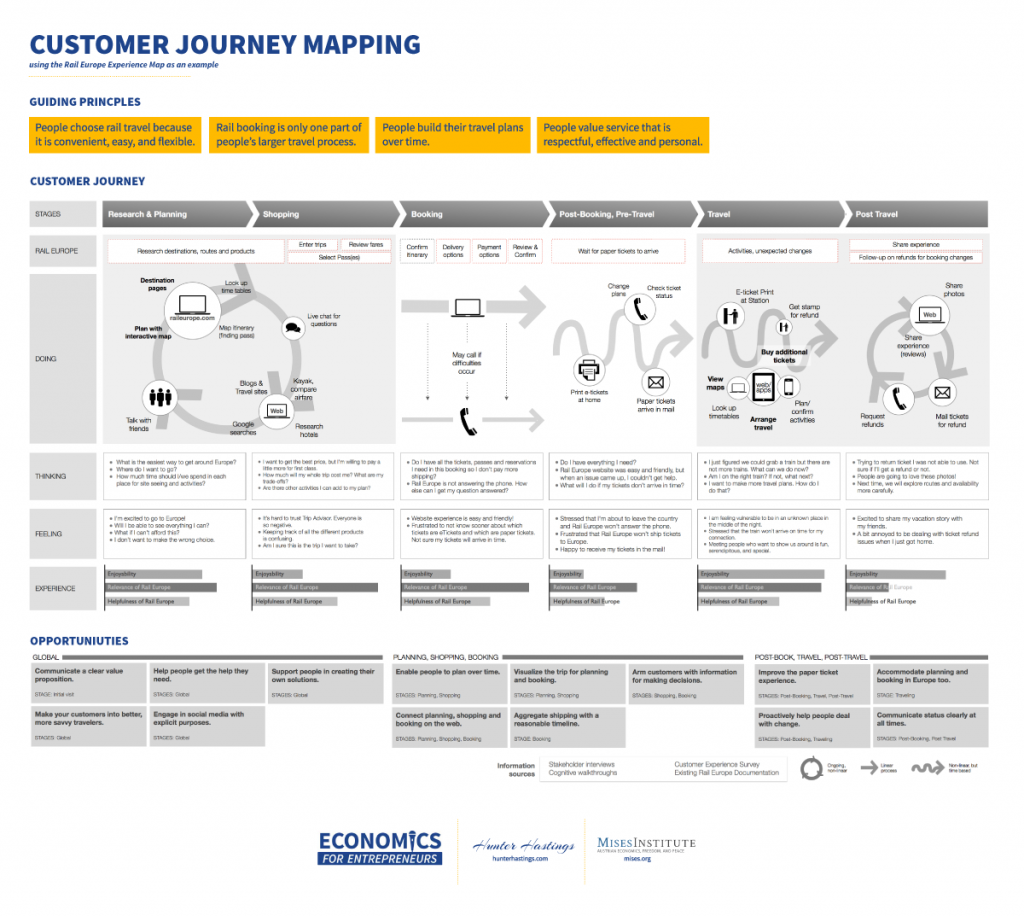Customer Journey Mapping
In our podcast episode, The Role Of The Entrepreneur, Per Bylund stresses the importance of starting the entrepreneurial process with the customer in mind.

Download This Tool Below
There are many techniques to help you formalize the consumer-first process, and one particularly useful one is Customer Journey Mapping (sometimes called Customer Experience Mapping).
- This technique decomposes a customer’s purchase and usage of a service into a series of stages, and asks the question, “What is the customer doing, thinking, experiencing and feeling at each stage?”
- This is sound Austrian Economics. It starts with human action – what is the observed behavior; then asks about motivation (why did they act?); then examines the consequences of the action –customer experience; then tries to probe the emotional benefit, defined as feeling.
- The process enables the kind of negative feedback that is most useful in the service improvement process. What if the experience is below expectations, or is less liked than the one delivered by a competitor? What if the customer’s feeling is disappointment or frustration? All of these challenges can be addressed if the data is available.
- The Rail Europe Experience Map example is well-known in marketing circles and is widely available on the internet. It’s a good example of the process.
- Do this for your business by breaking down the customer journey stages across the top horizontal axis of the map.
- On the vertical axis, map out what the customer is doing, thinking, feeling and experiencing at every stage (as well as what your service is doing, or presenting to the customer at that stage).
- Fill in the blank boxes at the intersections of the horizontal stages and vertical activities with research or intuition.
- Label a section called Opportunities for ways to improve.
Download the Customer Journey Mapping Tool (1 Page Version).pdf (2MB)
Download the Customer Journey Mapping Tool (3 Page Version).pdf (2MB)
Download How To Use the Customer Journey Mapping Tool.pdf (101KB)